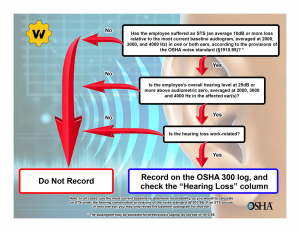On Feb.1, the OSHA 300 log annual requirement went info effect. Here are a few facts and how-tos to keep you and your company in compliance:
What is an OSHA 300 Log?
An OSHA 300 log summarizes the past year’s serious work-related injuries and illnesses. As per OSHA regulations, most employers with more than 10 workers must complete the logs, then post the results in a common area (i.e. break room). They must remain posted from the beginning of February until the end of April.
Records must be maintained at the job site for a minimum of five years.
What is its purpose?
It’s vital for businesses to maintain updated, accurate health and injury records. Noncompliance with OSHA may tarnish a business’s reputation, and potentially lead to an organizational downfall. The OSHA 300 log helps employers, workers and OSHA evaluate workplace safety; understand hazards within certain industries; and implement proper safety regulations.
Furthermore, current and former employees, and/or representatives on their behalf, may request copies of the reports when necessary for legal matters.
Which injuries and illnesses must be recorded?
OSHA defines a recordable injury or illness as follows:
- Any work-related fatality.
- Any work-related injury or illness that results in loss of consciousness, days away from work, restricted work, or transfer to another job.
- Any work-related injury or illness requiring medical treatment beyond first aid.
- Any work-related diagnosed case of cancer, chronic irreversible diseases, fractured or cracked bones or teeth, and punctured eardrums.
- There are also special recording criteria for work-related cases involving: needle-sticks and sharps injuries; medical removal; hearing loss; and tuberculosis.
Additionally, the logs need to include an industry description, SIC or NAICS number, the average number of employees and their total hours worked during the previous year.
Certain low-risk industries may be partially or completely exempt. Also, minor injuries requiring first aid only need not be recorded.
What if no injuries or illnesses occurred in 2016?
As per OSHA, you must still complete an OSHA 300 log. In order to comply, mark the report with zeros to indicate that no injuries or illnesses occurred.
What’s New for 2017?
On Jan. 1, a new rule took effect that requires some employers to electronically submit injury and illness data that has already been recorded through onsite forms. OSHA created the provisions to increase resource efficiency for enforcement and compliance assistance.
Click HERE to learn more about the new rule.




